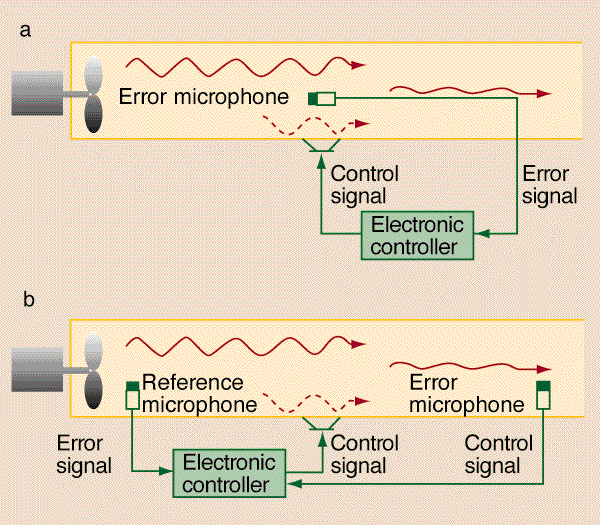- Select a language for the TTS:
- UK English Female
- UK English Male
- US English Female
- US English Male
- Australian Female
- Australian Male
- Language selected: (auto detect) - EN
Play all audios:
VOL: 101, ISSUE: 36, PAGE NO: 36 Tarnia Taverner, MSc, RGN, is a PhD student, University of Leeds BACKGROUND Many clinicians believe that older people feel pain to a lesser degree than
younger people. Often older people themselves assume that ageing is associated with both a loss in their ability to perceive pain and an increase in non-specific pain-related suffering.
However, a significantly large proportion of people over the age of 65 years will experience chronic pain. If nurses assume that an older person feels less pain, then the management of that
individual’s pain may be less than adequate. An increase in the incidence and severity of pain is seen with age until the seventh decade of life. Older people are less likely to complain of
being in pain after this age, but this does not necessarily mean that the experience of the individual is less. It may be due to the fact that older people are more likely to suffer from
conditions such as dementia, which affect how they express themselves, or simply that their life experience has made them view their pain differently. Critchley (1931) stated that one reason
for the decline in complaints of pain after the age of 65 years, despite increasing morbidity from diseases associated with pain, may be that sensory- discriminative pathways and possibly
affective-motivational and cognitive-interpretive pathways are less efficient. Critchley also claimed that older people can tolerate tooth extractions and minor surgical procedures with
little or no discomfort. However, recent studies to investigate such findings using noxious stimuli such as heat and pressure have been inconclusive (Harkins et al, 1986). Although the
relevance of such studies is uncertain, reviews of other studies looking at experiences of pain show little difference between older and younger people (Gagliese and Melzack, 2003). In older
patients who have conditions that would be expected to cause severe pain, such as myocardial infarction and intra-abdominal emergencies, severe pain is not reported. The pain may be
reported later, less frequently or not at all (Ambepitya et al, 1993). A study investigating visceral disorder and ischaemic disease showed a delayed perception of pain among older people
that could potentially cause delays in diagnosis and treatment (Ambepitya et al, 1993). A study by Miller et al (1990) showed that increasing age was a factor in the perception of cardiac
ischaemic pain, regardless of the severity of the disease. Another study looking at pain and discomfort in a variety of procedures found that pain measured using a visual analogue scale
diminished with advancing age at a rate of 10 per cent per decade in intra-arterial line, intravenous line, phlebotomy and parenteral injections. However, in urethral catheter insertion and
intravenous therapy, scores were not significantly different between age groups (Meier et al, 1996). PAIN THRESHOLD However, none of the studies was conclusive. It may be that ratings of
discomfort were shown to have no difference among age groups because older people have an elevated pain threshold, rather than that they feel less pain. In other studies, a decrease in
tolerance to high-intensity noxious stimuli was demonstrated with advancing age, especially in men (Harkins et al, 1986). Helme and McKernan (1985) studied flare response to noxious
stimulation by applying capsaicin to initiate a flare response. They assessed the induced flare response in 220 subjects. The major factors in flare response were identified as body site and
age. More severe reactions were shown to occur in younger subjects when proximal sites were used. In another study, thermal stimuli were delivered to the skin of the arms and legs. This
produced two distinct pain sensations associated with activity in A-delta (first pain) and C-fibre (second pain) nociceptive fibres. Findings showed that there was no difference in pain
intensity ratings for the initial stimuli to previously unstimulated skin for either first or second pain between age groups. SUBJECTIVE FACTORS It seems from the various studies undertaken
that there may be a reduction of pain intensity as an individual gets older. However, pain is not easy to evaluate - it is highly subjective and personal experiences will have an influence
on how the individual expresses their pain and how they experience their pain. These subjective factors are difficult to measure. There are many psychological, sociocultural and situational
factors that are known to influence the way an individual perceives their pain, making the pain a unique and distinctive phenomenon for each individual (Jacox, 1977). Changes in
physiological response or behavioural indices can be useful, but they cannot be a completely reliable indicator of pain severity (Iafrati, 1986). It has been stated by some authors that
there is not one single expression of pain: two people may react quiet differently when exposed to the same painful stimulus (Sternbach, 1978). The clinical relevance of any conclusions
reached should not be taken at face value. It is important to take into consideration that pain produced in a controlled environment is entirely different from that experienced by, for
example, somebody living with chronic pain in their own home. PERCEPTION OF PAIN Perception of pain and individual beliefs have an impact on how the individual copes with their pain.
Gagliese and Melzack (2003) undertook a study to assess age differences in pain intensity and quality. They predicted that in a diverse sample of patients at a pain clinic, there would be no
age differences in numeric ratings of pain intensity but that elderly people would obtain lower scores in a pain questionnaire (Melzack, 1975) compared with younger patients. Age
differences were found - the older group had significantly lower total and sensory scores and chose fewer words to describe their pain than the younger group. Data from numeric ratings,
however, showed no significant difference between how each group scored their pain. It was also found that there were no age differences using Pain Management Index scores or hospital
anxiety and depression scales (Breitbart et al, 1996). Other authors have found differences between age groups when using the pain questionnaire across samples of patients from pain clinics,
surgical wards and the community (Gagliese and Melzack, 2003). COGNITIVE FACTORS Cognitive factors are thought to play an important role in the individual patient’s experience of pain.
Wallston et al (1978) developed a scale that measured how cognitive factors affected people’s health, known as the Multidimensional Health Locus of Control scale. The questionnaire was
adapted for work undertaken by Main and Waddell (1991) and Toomey et al (1991) to allow for specific beliefs regarding control over pain to be investigated. Research has shown that patients
with chronic pain who have a predominantly internal locus of control report a decrease in the intensity of pain (Jordan et al, 1998; Toomey et al, 1991), less mood disturbance (Jordan et al,
1998), and a choice of more active, self-directed coping strategies (Melding, 1995). The scale has two states of control, which are based on the individual’s beliefs. The first is for those
who believe that the severity of pain is determined by chance or by the actions of ‘powerful others’, such as family members or health professionals. These people are described as
displaying an ‘external locus of control’. People who feel that their own behaviour affects their health status are thought to have an ‘internal locus of control’. By contrast, people who
are thought to have an external locus of control are more likely to report their pain (Toomey et al, 1991), have higher levels of depression and are more likely to use maladaptive coping
strategies, such as catastrophising (Crisson and Keefe, 1988). Some elderly people exhibit a more external locus of control when confronted with health-related problems (Melding, 1995).
Older male patients with chronic pain appear to rely more heavily on factors of chance and powerful others (Buckelew et al, 1990). A study undertaken by Gibson and Helme (2000) also showed
that adults aged over 81 years had significantly higher scores on chance locus and higher scores relating to powerful others with regard to their pain control. This may just be a reflection
of maturity and hence a more pragmatic view as they rightly believe that many events, especially with regard to health status, are beyond their control. PAIN BELIEFS AND PERCEPTIONS
INVENTORY Another tool to measure the relationship between pain beliefs and pain experience is the Pain Beliefs and Perceptions Inventory (PBPI) (Williams and Thorn, 1989). The instrument
measures four dimensions of pain belief: - Constancy - the belief that pain is constant; - Permanence - the belief that pain is permanent; - Self-blame - the belief that the individual is to
blame for their own pain; - Mystery - the belief that pain is both confusing and mysterious. PBPI scores are related to a number of outcome variables, which include: - Increased pain
severity; - Poorer treatment adherence; - Greater psychological distress; - A decrease in perceived control over health-related outcomes; - Greater use of catastrophising. A study undertaken
by Stroud et al (2000) using the PBPI found that pain beliefs and cognitions were related to chronic pain adjustment and not age. Although an individual’s ability to adjust could be
affected by their age. However, it has also been found that patients’ beliefs can be changed. The findings from the work undertaken by Gibson and Helme (2000) suggest that when following a
multidisciplinary cognitive-behavioural programme, the older people had a greater internal locus of control. This allowed them to have more control over their pain and to display more
frequent use of active, self-directed coping strategies. PAIN PROGRAMMES It has been suggested that health care professionals do not believe that elderly people will benefit from chronic
pain programmes. Primary care physicians seem to be reluctant to refer older people to a multidisciplinary pain clinic (Turk et al, 1995). However, there is no evidence to show that age is a
factor in whether the individual will benefit from a chronic pain management programme. Although elderly people may experience their pain slightly differently to younger people, it cannot
be assumed that they will respond less favourably when referred to a pain clinic. Many studies have reported a positive outcome for elderly people who are referred to a multidisciplinary
clinic (Gibson et al, 1996; Helme, 1996). Puder (1988) also reported that when older people were put on a cognitive-behavioural programme the outcomes were very favourable. CHRONIC PAIN The
real differences in the experience of chronic pain between young and old remain unclear. Sorkin et al (1990) showed that older people with chronic pain obtain lower scores than younger
people when assessed using a pain questionnaire (Melzack, 1975). Other studies have found no difference in scores among older and younger patients with chronic pain (Lichtenberg et al, 1986)
and no difference in beliefs about pain were found in a sample of people of varying ages with arthritis (Gagliese and Melzack, 1997). However, Herda et al (1994) found that increasing age
was associated with a stronger belief that pain is a constant experience. They went on to say that among those referred for multidisciplinary pain management, there were no differences in
treatment expectations, acceptance, compliance or drop-out rates. Therefore, it can be suggested that these older people did not believe that their pain was a natural consequence of ageing
that should be tolerated. CONCLUSION It can be concluded from the available evidence that elderly people perceive pain differently from people in other age groups. However, the intensity of
the individual’s pain may be just as great, which could be due to the fact that older people’s ability to describe their pain is impaired. There is little evidence to support the hypothesis
that elderly people experience less pain, especially as they should be recognised as a particularly vulnerable group. This article has been double-blind peer-reviewed. For related articles
on this subject and links to relevant websites see www.nursingtimes.net








